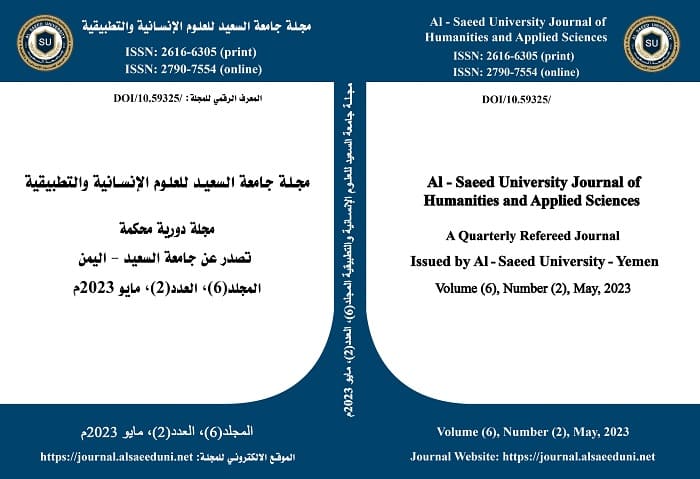Perception of General Education Teachers in Taiz Governorate of Yemen towards E-training
DOI:
https://doi.org/10.59325/sjhas.v6i2.152Keywords:
Perception, E-training.Abstract
E-training can play a crucial role in reducing the ‘digital divide’ in the process of training in-service teachers. This research aimed at revealing in-service teachers’ perceptions towards e-training through mobile phone to make sure of their readiness to be engaged in e-training and to identify whether there are statistically significant differences at the level ( towards e-training according to the variables of gender, educational stage, qualification, and experience. To collect data, the researcher prepared a scale of (23) items distributed on (6) axes. After verifying the scale for its validity and reliability, it was administered to a sample of (196) in-service teachers from general education in Taiz Governorate - Yemen during a traditional training course in the period of 21-26 January 2023. The collected data indicated that (189) of the respondents (i.e., 96.43%) have mobile phones and that (70%) of them have basic knowledge about mobile phone device as well as the concept of e-training. The research results showed that in-service teachers have positive perceptions towards e-training as (76.6%) of the respondents stated and they are eager to be engaged in it. The results also indicated that there are statistically significant differences in the teachers’ perceptions towards e-training according to the variables of gender, educational stage, qualification, and experience. In the light of the results, the researcher recommended using the research results as a basis for designing and developing an e-training system for training in-service teachers in Yemen.
Downloads
Published
How to Cite
Issue
Section
License
copyright is retained by the authors. Articles are licensed under an open access Creative Commons CC BY 4.0 license, meaning that anyone may download and read the paper for free. In addition, the article may be reused and quoted provided that the original published version is cited. These conditions allow for maximum use and exposure of the work.



